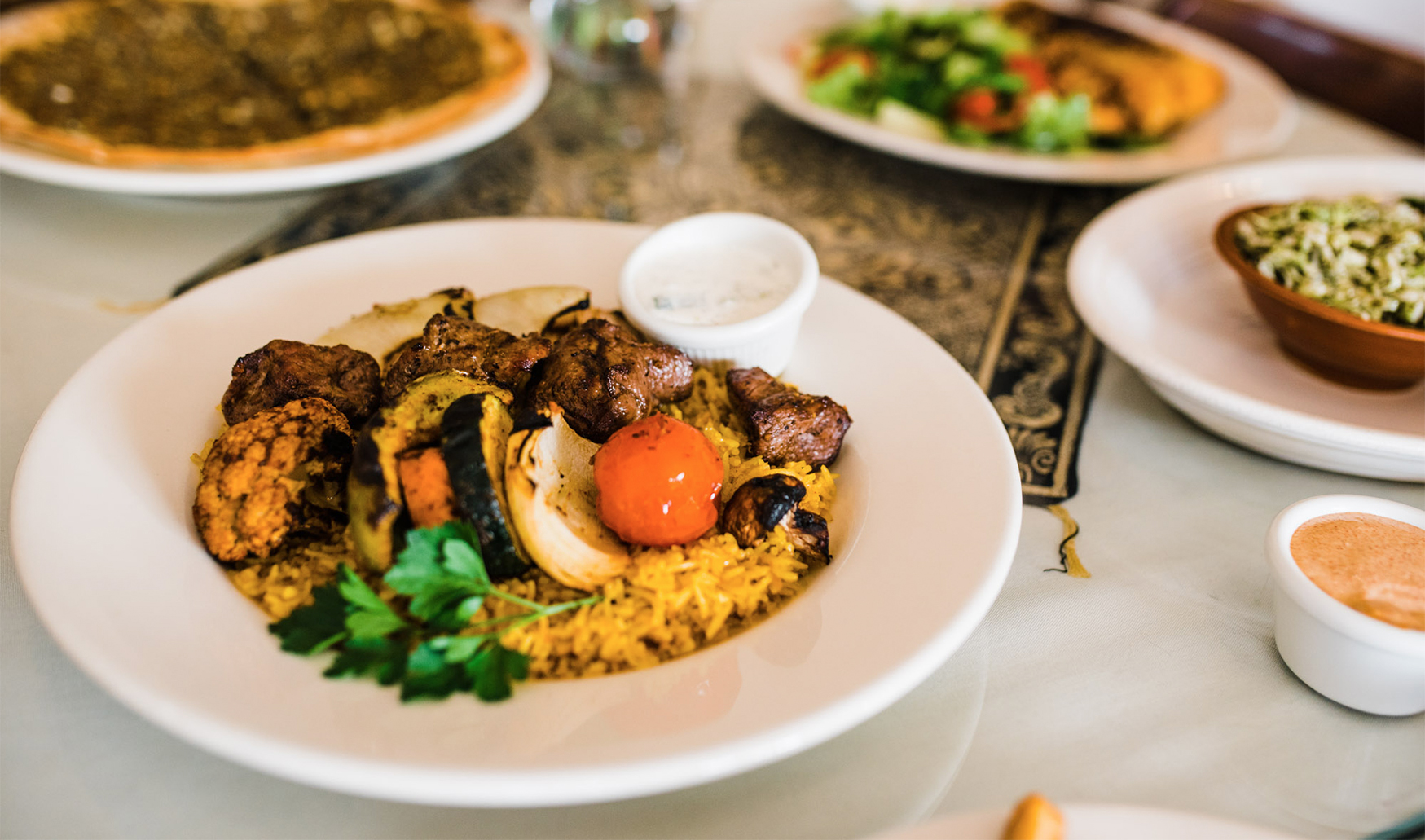Mazza

A mazza is best described as a number of different appetizers arranged as a meal. Many Middle Eastern restaurants offer mazza dishes as a filling dinner alternative to a 3 course meal. To make a mazza complete, I recommend listening to some wonderful Arabic music.
When visiting a Lebanese restaurant, the chef knows exactly what to prepare for a mazza and the order in which each dish should be served. Initially, the chef will start with a plate of hummus bi tahini that is often garnished with some spiced ground beef, a plate of baba ghanoosh that is rich with garlic, some tabouli which gives the table wonderful color, kibbee balls, sijook which mixes so well with hummus, shankleesh that is adorned with onion and tomatoes, olives that have been pickled in oil and vinegar, fatayer and samboosik. When you are halfway done with these appetizers and think you can rest your stomach for the evening, the chef brings out the mishwe, which consists of shishtawooz (chicken skewers), lahmi mishwe and kafta kabob. Throughout the evening, your table is adorned with delicious food that is rich in flavor, aroma and texture. Every bite seems to go down much more smoothly with a sip of Arak, the famous Lebanese drink made from grapes and tastes very much like Oozo.
Food always played a major role with my family when we were growing up. The mazza was something my mother prepared almost once a week, especially when we had company. Although it took her a long time to prepare a mazza, she never complained and made every dish with love. By the time she was done, the house smelled of roasted meats, lemon, garlic and a host of other aromas, and the table looked amazing. It was adorned with color and fragrance.
And now, my table is often filled with a mazza because my family loves the different flavors this tradition offers.
